Greetings from the Branch President
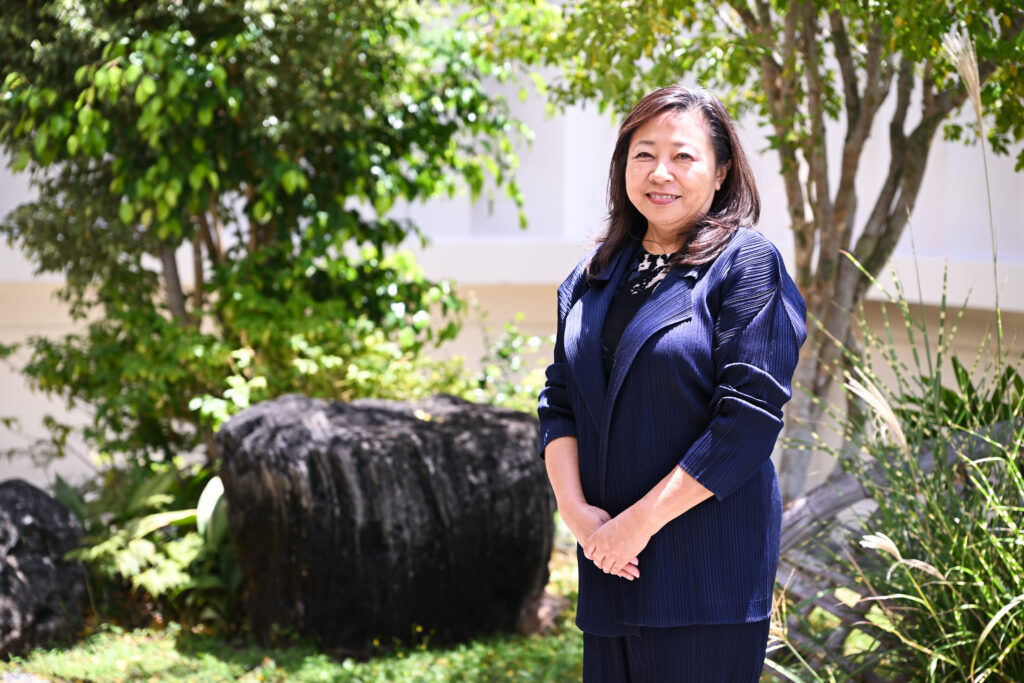
Aloha, and welcome to the website of the Omotesenke Domonkai Hawai’i.
We are pleased to share information about our activities, events, and other updates here.
Our hope is to convey the history, philosophy, and spirit of the Way of Tea to all who are interested.
We also wish to deepen your understanding of this art through its core principles: the spirit of ichigo-ichie (“one time, one meeting”), the harmony of wa-kei-sei-jaku (harmony, respect, purity, and tranquility), and the essence of what defines the Way of Tea.
Through the simple act of preparing and receiving a bowl of tea, one can feel the spirit of hospitality and gratitude expressed in a series of flowing movements.
We warmly invite you to experience the beauty of the Way of Tea with Omotesenke.
Rika Hirata
President, Omotesenke Domonkai Hawai’i
Former Branch Presidents
.
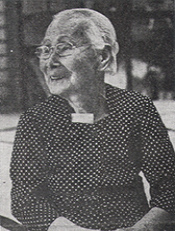
Sae Tachikawa
(Served 1955-1976)
Born in Fukuoka Prefecture, Japan. After graduating from a local girls’ school, she went on to study at an art school in Tokyo, where she obtained a license to teach junior high school. Upon returning to her hometown, she took a position at Shukutoku Girls’ School.
In 1911, she married Rev. Makoto Tachikawa, who had come to Hawaii as a missionary assistant for the Jodo sect. In 1920, the entire family, including their fourth son, moved to Honolulu. The Hawai’i Girls’ School was affiliated with the Honolulu mission, and Ms. Tachikawa served as the head of the school. Rev. Makoto Tachikawa passed away in 1925.
She returned to Japan to bury her husband’s ashes, and after returning to Hawaii in 1931, she was moved by the enthusiasm of her students at the Hawaii Girls’ School to take the first step as an educator, similar to a girls’ school in Japan.
In 1931, she established a tea room in the newly built school building and began tea ceremony practice as one of the subjects at Tachikawa Junior High School. The tea ceremony she taught here became the origin of Urasenke tea ceremony instruction in Hawai’i. She devoted herself to promoting Urasenke tea ceremony through the school and became the first president of the Urasenke Tankokai Hawaii Association, which was established in 1955.
She devoted herself to Japanese language education in Hawaii for 50 years. In 1963, she completed a new private school as a modern two-story building and established a 100-year plan for Japanese language education in Hawai’i. Her contributions to Japanese language education in Hawaii were recognized, and she was awarded the Blue Ribbon Medal in 1967, the Sixth Order of the Sacred Treasure in 1968, and the Fifth Order of the Sacred Treasure in 1973.
She ran an independent Japanese language school and left a great legacy, especially in the field of girls’ education, and was also called the “Mother of Japanese Language Education in Hawai’i.”
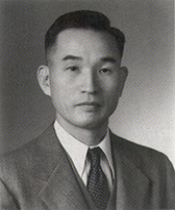
Tokuzen Awamura
(Served 1976-1979)
Awamura, former Branch Head of the Omotesenke Domonkai Hawai‘i, was also the father-in-law of U.S. Senator Daniel K. Inouye.
Born on May 1, 1898, in Hiroshima, Japan, he moved to Hawai‘i as a young man. At the age of 15, he began working as a sugarcane laborer in Wailuku, Maui. Within two years, he joined the Maui Trading Company in Lahaina, where he worked long hours while studying English each evening.
He later became a jewelry salesman and, after completing his apprenticeship, opened his first jewelry store in Pa‘ia, Maui, in 1920. Nine years later, he established the Heiwado Jewelry Store in Honolulu.
Awamura was deeply involved in local organizations and Japanese cultural life. In addition to his leadership in Omotesenke, he served as president of the Japanese Chamber of Commerce, the Japanese American Citizens League, and the Hawai‘i Economic Research Group.
In recognition of his many contributions to society and culture, he was awarded the Order of the Sacred Treasure, Fifth Class, in 1968. He passed away on December 26, 1984, at the age of 86. Together with his wife Mitsu, he raised six daughters, leaving a lasting legacy of family, community, and devotion to the Way of Tea.
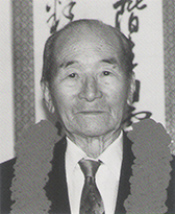
Tarokichi Hiramatsu
(Served 1979-1986)
Born in Wakayama Prefecture on July 9, 1908.
He dropped out of Kagawa Prefectural Awashima Nautical School in 1928. From 1932 to 1950, he worked as a construction craftsman, and from 1950 to 1976, he served as the president of Hiramatsu Construction Contracting Company.
He served as vice president of the Hawaii Japanese American Federation, president of the Hawai’i Wakayama Prefectural Association, and director of the Hawai’i Meiji Association. He also served as chairman of the board of directors of the Hawaii Konpira Shrine and Dazaifu Tenmangu Kyodan, as well as an advisor. He was an advisor to the Hawaii Soto Zen Shohoji Temple and a member of the Hawaii Izumo Taisha Society.
In 1979, he was appointed president of the Urasenke Tankokai Hawai’i Association on the recommendation of former President Sae Tachikawa and then-President Tokuzen Awamura. He served until 1986, and in recognition of his achievements, he was honored as an honorary member in 1986.
In 1995, he was awarded the Sixth Order of the Rising Sun, Single Rays, for his contributions to the development of the Japanese American community in Hawai’i, the improvement of the status of Japanese Americans, the preservation and promotion of Japanese culture, and the promotion of friendship and exchange between Japan and Hawai’i.
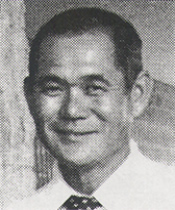
George Sadaharu Ishida
(Served 1986-1991)
Born in Honolulu on February 9, 1923. Former President of the Hawai’i Japanese American Federation.
During his 20 years in the U.S. Army after the war, he supported Japan’s postwar reconstruction and democratization and worked to promote friendship between the Japanese people and the U.S. military stationed in Japan. After retiring from the military, he contributed to the development of the concrete industry in Hawai’i, and ultimately to the development of the construction industry in Hawai’i.
He continued to be active in the local community, and in particular, he served as the president of the Okayama Prefectural Association for many years, greatly promoting friendship and exchange between Hawai’i and the Okayama region. In addition, as president of the Hawai’i Japanese American Federation, he promoted the unity of Japanese Americans. Furthermore, through his positions as chairman of the O’ahu Government-Sponsored Immigrants Centennial Ceremony Committee, director of the Japanese Cultural Center of Hawai’i, and vice chairman of the Japanese Immigrant Historical Documentation Society, he contributed to the preservation and promotion of the culture of Japanese Americans in Hawai’i, and at the same time, contributed to the improvement of the social and economic status of Japanese Americans and the promotion of friendship and exchange between Hawai’i and Japan.
Passed away on March 1, 1998.
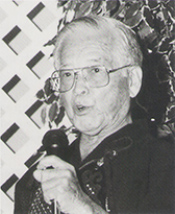
Yoshio Yoshinaga
(Served 1991-1995)
Contributed not only to the Japanese American community in Hawai’i, but also especially in the field of martial arts. Played a leading role in the Kenshikan Dojo at the Japanese Cultural Center of Hawaii.
For over 60 years, he taught kendo techniques to over 100 students, and from 1948, he also taught kyudo (Japanese archery), which was another passion.
In addition to being a dedicated teacher, he was also active as the president of the Hawaii Kendo Federation and the Japanese American Association, and his abilities as a leader were recognized.
In 1994, he was awarded the Fifth Order of Merit from Japan in recognition of his dedication and achievements in the succession and promotion of Japanese culture and traditions. In 1998, he received the Japanese Cultural Center’s TRADIA AWARDE (Tradia Award) in the senior division, which is given to those who have made special efforts to preserve Japanese culture and traditions. Passed away on September 16, 2013, at the age of 95.
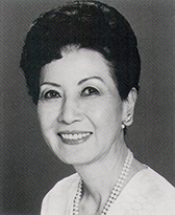
Margaret Oda
(Served 1995-2014)
Born in Hakalau-Wailea, Hawai’i Island. After earning a Bachelor of Arts in Education from the University of Hawai’i and a Master of Arts in Mathematics from Michigan State University, she obtained the first doctorate in the teacher education program at the University of Hawai’i. In 1972, her research on American educational issues at Yale University was highly recognized, and she received a research scholarship as one of the nine outstanding educators in the United States.
After that, she was involved in a wide range of education at public high schools in Hawai’i, serving as vice principal of Hilo Intermediate School, principal of Kaiser High School, superintendent of the Hawai’i State Department of Education (Elementary Education), and state legislator supervisor. Her writing activities based on these educational experiences have also greatly contributed to state education.
In community activities, she became the first female chairman of the board of directors of the Kuakini Health System. She also served as a trustee of the Honolulu Museum of Art, the Lyman House Memorial Museum, Hawai’i Private High School, St. Louis High School, and the Japanese American Memorial Foundation in Washington, D.C., as well as vice chairman of the Japanese American National Museum in Los Angeles, vice president of the Japan-America Society of Hawai’i, and president of the Honolulu Japanese Women’s Society.
In recognition of these social contributions, she has received awards from the University of Hawai’i College of Education, the University of Hawai’i Alumni Association, and the Hawai’i Public High School Foundation for outstanding alumni, as well as awards from the National Society of Fund Raising for those who have made significant achievements in fundraising. In 1992, she was awarded the Fourth Order of the Sacred Treasure from His Majesty the Emperor and the Order of the Rising Sun, Gold Rays with Rosette from the Japanese government. Passed away on April 15, 2018.
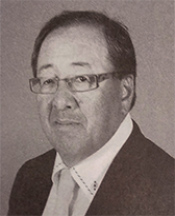
Nobuyuki Miki
(Served 2015-2015)
Born in Himeji in 1958.
Graduated from Creighton University in Omaha, Nebraska, majoring in Chemistry. After graduating from Creighton University School of Medicine, completed an internal medicine residency at the University of Hawai’i.
Internist and Vice President of Kuakini Medical Center.
Also serves as Medical Director of the Executive Health Program.
Director of Miki Medical Clinic.
In addition, he is an honorary citizen of Nebraska City, and instructs in the University of Hawaii Residency Program,
serves as Board Chair of the Hawaii Japanese School, Advisor to the Kuakini Hospital Medical Staff,
and participates as a member and board member in numerous other local organizations.
In 2023, received the Consul General’s Commendation for contributions to medical care and infectious disease control for Japanese citizens and Japanese Americans in Hawai’i.
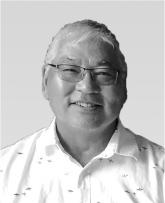
Pieper Toyama
(Served 2015-2019)
Born and raised on a sugar cane farm on the Big Island (Hawaii Island).
Earned a bachelor’s degree in English from the University of Massachusetts and a master’s degree in education from Northeastern University. Taught at Honokaa High School, Hilo High School, and the University of Hawaii at Hilo. Served as principal of Parker School in Kamuela from 1990 to 2002.
In 2003, he founded the Pacific Buddhist Academy (PBA) in Honolulu, the first Jodo Shinshu high school in the Western Hemisphere. The school focuses on educating students on their own inner peace and how to bring peace to the surrounding community.
In particular, Urasenke tea ceremony is offered as a regular curriculum in cooperation with the headquarters, branches, and schools, making it the first educational institution outside of Japan to offer such a class at the high school level. During his tenure as branch president, he devoted himself to conveying the spirituality of tea based on the philosophy of ichigo ichie. His family includes his wife, Louise, two daughters, and four grandchildren.
His book “Family Stories from the Plantation and Beyond,” published in 2023, chronicles the small surprises of life, which may be related to the tea ceremony, along with his own life story.
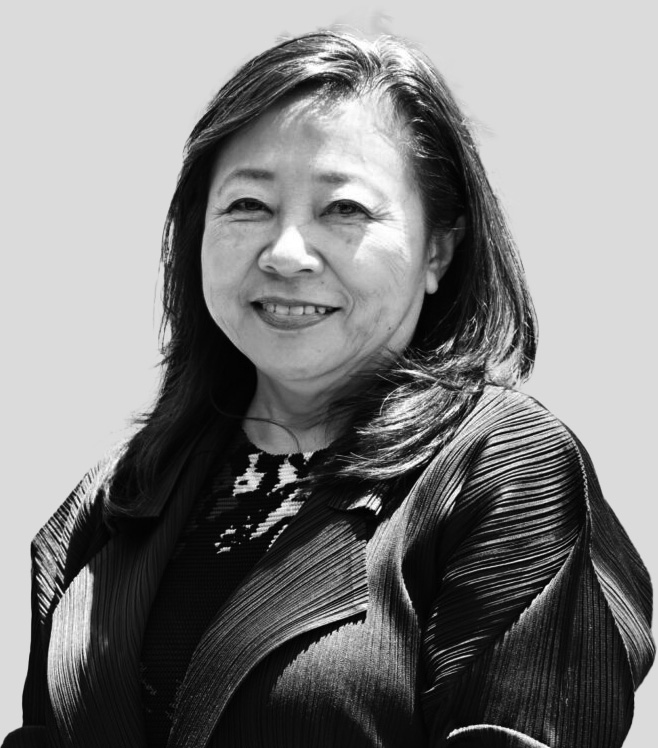
Rika Hirata
(2019 – Present)
Rika Hirata is a financial professional who serves as Vice President & Team Leader at First Hawaiian Bank, and is active in various fields as a bridge between Hawai‘i and Japan.
Introduction of Officers
BOARD OF DIRECTORS
Chair: Rika Hirata
Joy Miyasaki
Msgr. Terrance Watanabe
Josh Hernandez Morse
Hiroki Matsuda
Pieper Toyama
Wendy Abe
Advisor: Dr. Nobuyuki Miki
P.Edwin Hawkins
Honorary Director: Nobuyuki Mikimachi Sosho
Honorary Advisor: Yoshinori Kodama, Consul General of Japan
OFFICERS
President: Rika Hirata
Vice President: Keiko Childers
Treasurer: Ami Tsukuda
Assistant Treasurer: Hatsuko Hashikura
Secretary: Akemi Sasaki
APPOINTMENTS BY THE PRESIDENT
Executive Director: Kumiko Okimoto
Assistant Executive Director: Akemi Sasaki
